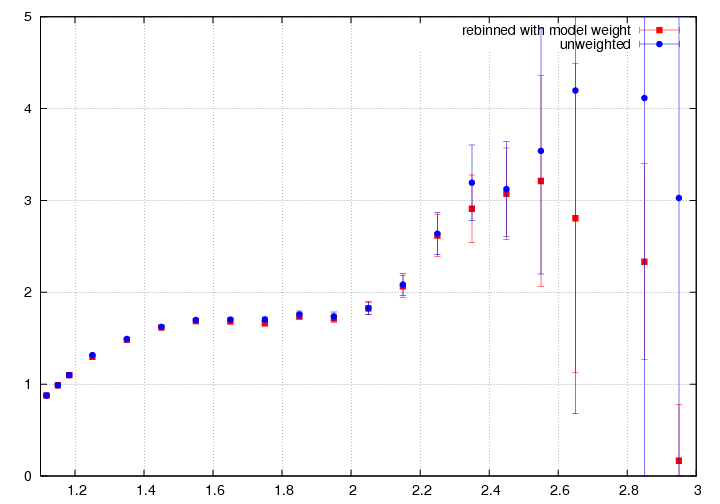--SRC Index
In an attempt to make sure that the 3He points at x>2.5 are really not salvageable, here's a series of tests. There are two problems: statistics are awfully low and the cross section model goes to zero at x slightly below 3. There's nothing I can do about (a), so I'm only going to talk about (b)
First, here's a plot reminder of the agreement between 3He data and model (qualitative) for 18 degrees. The model goes to zero faster than the data
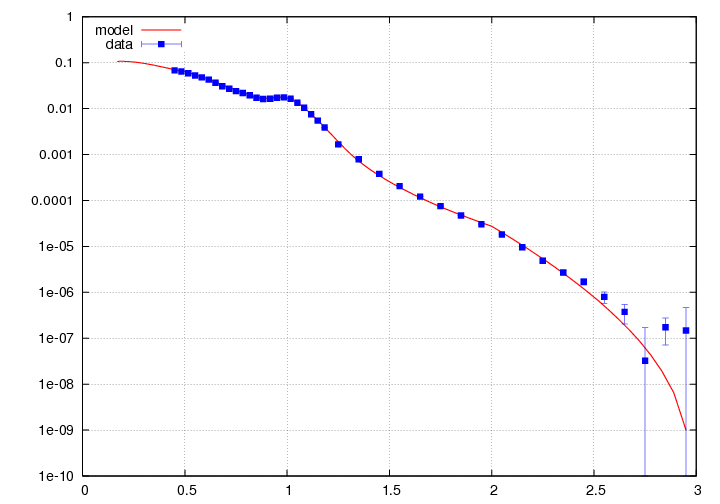
Note that this is a plot of rebinned cross sections (for x>1.2, each three points are recombined ito one new one).
The problem that comes about from this affects bins for x>2.875. The way cross sections are computer are via the formule sigma_rad(x)=Y_data/Y_MC*model_rad(x). The Monte Carlo yield (Y_MC) is the ntuple where each event is weighted by the radiated cross section model evaluated at the (x,theta) of the event (along with a couple of detector corrections that are on the order of 1.)
Now, I don't calculate the model and radiate it as I go. I have a 2-D grid in theta,x of radiated cross sections. So, I pick the 4 closest neighbors from the grid to the MC event and interpolate in both directions to get sigma_rad(x,theta). Normally, this is problem-free. However at the extreme kinematic bins, I run into the problem that the model goes to zero. So, if some of my 4 points are 0, and I do an interpolation - I end up with a negative cross section. Oops.
You can see the problem in the following plot, where I show the sigma_rad that's going into the MC histogram as a weight. YOu can see that it's not trustworthy for x>2.875.
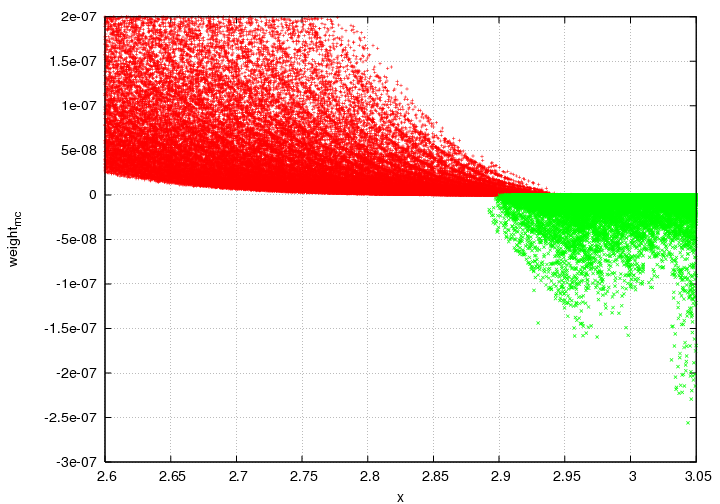
While it's absolutely wrong for x>2.875 (well, I don't actually use the negative weights, those points don't go into the histogram), John pointed out that the earlier points might have issues, to if the model doesn't go to zero quite right.
To test that, instead of bin-centering with sigma_rad(x,theta), I did the bin-centering with two other weights: sigma_rad(x,theta_central)*(A-x)^n/(A-x_cen)^n with n=2,3. I started this with deuteirum since it's more straight forward to tell what's going on (no negative cross sectoins and all).
Below are plots of the cross sections, Y_MC, and Y_data using the 3 different BC weights.
Cross section
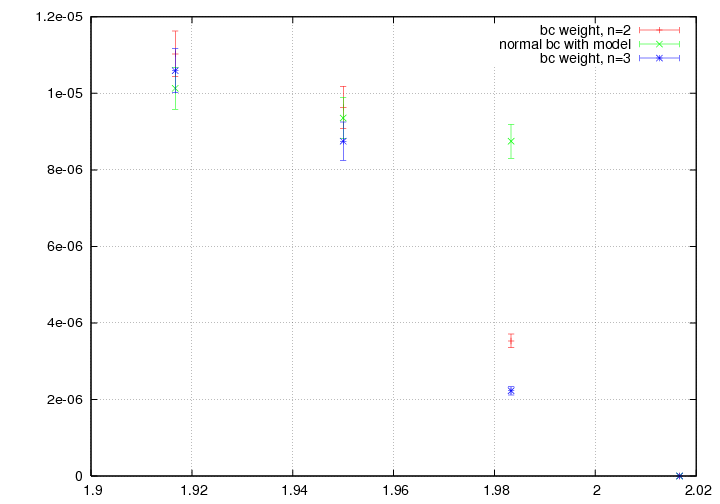
Data yield
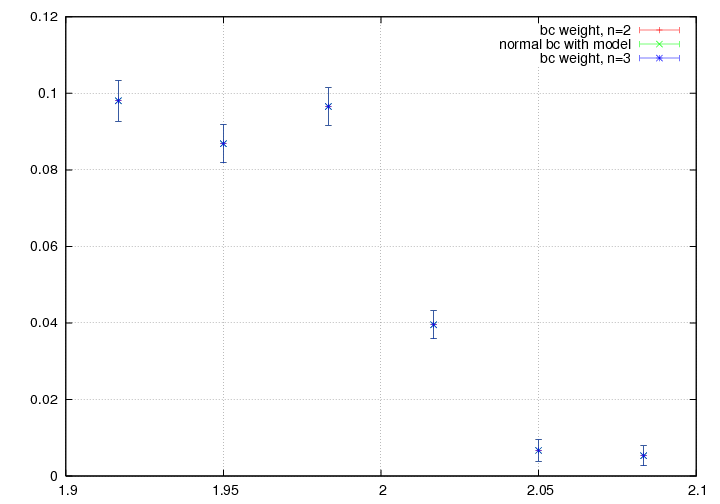
MC yield
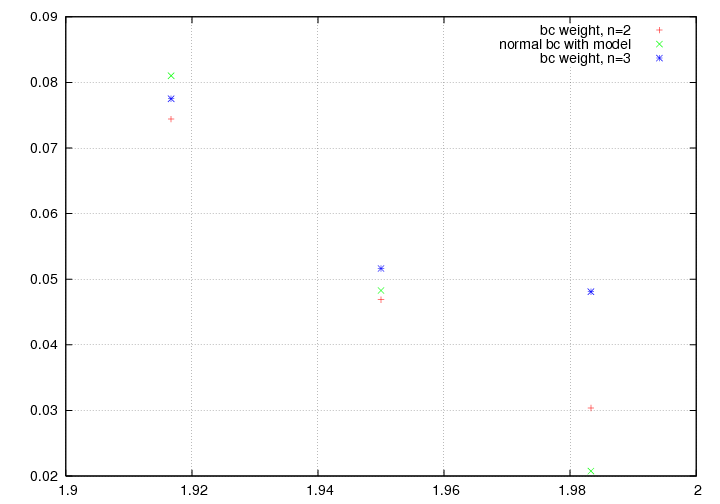
So, while you can see that the regular deuterium cross section doesn't go to zero at x=2, it's probably not because of the bin-centering, since you can see the elastic deuterium peak in the plot of the data yield.
So, just to be sure that the last point is not f**ked up, John suggested that I just remove the bin-centering in x, and just quote the average cross section in that bin *AT* the average x (which we'd assume would be on the low-x side of the bin). Seems reasonable.
So, since hbook keeps track of the binning for me (I give it an x and a value, and it figures out which bin it goes into and so on), it turned out to be kind of a pain to keep track of the average x in each bin. So, instead, I created two more histograms, both binned in x: one has x-values for weights, and the other just hast weights of 1. So, if I divide them (total over x by number of points), I should have the average x. Funny story - it's pretty much identical to the central x.Here's a list of of central x and average x for the highest momentum setting for 18 degrees (well, not ALL of the points):
[updated Aug 4th, because I'd made a mistake before]
1.04999995 1.05502
1.08333325 1.08497
1.11666667 1.11699
1.14999998 1.14973
1.18333328 1.18293
1.21666658 1.21618
1.25 1.24951
1.2833333 1.28274
1.3166666 1.3161
1.3499999 1.34939
1.38333333 1.38269
1.41666663 1.41604
1.44999993 1.44939
1.48333323 1.48268
1.51666665 1.51594
1.54999995 1.54944
1.58333325 1.5829
1.61666656 1.61594
1.64999998 1.64954
1.68333328 1.68275
1.71666658 1.71655
1.74999988 1.74941
1.7833333 1.78233
1.8166666 1.81663
1.8499999 1.8494
1.88333321 1.88268
1.91666663 1.91588
1.94999993 1.9499
1.98333323 1.98312
I assumed I'd make a mistake (we're focusing on the last bin here, the one that's centered on 1.983). So, I pulled up the deuterium ntuple and zoomed in on that bin (1.962-2 or so), with the usual electron cuts. Well, the cross section is very flat across x! So, the average x *IS* the central x! (see plot below). I guess I made my x-bins *THAT* small!
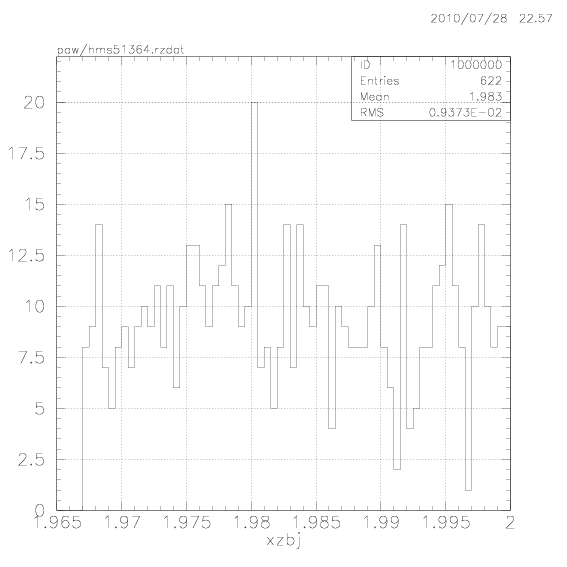
Just to make sure, I looked at a bigger x-bin, and it's totally exponential there:
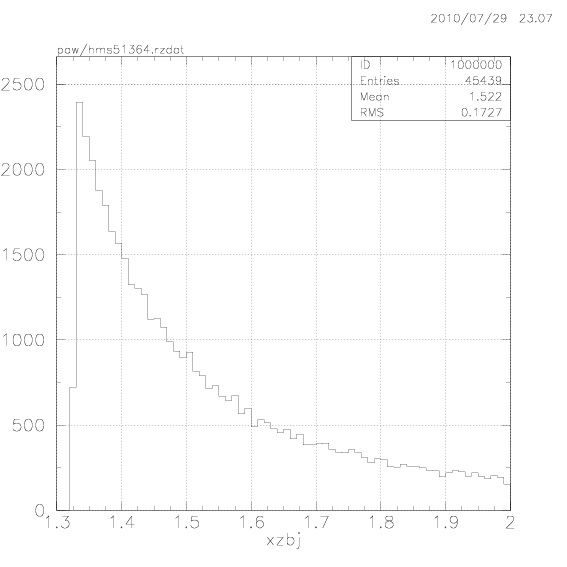
So, I don't know what else I can do for deuterium. Next, I'm moving on to helium-3.
>3He
So, we do the same test for helium-3, where the change the bin-centering, and then take the ratio to helium-4 (also having changed the bin-centering there).
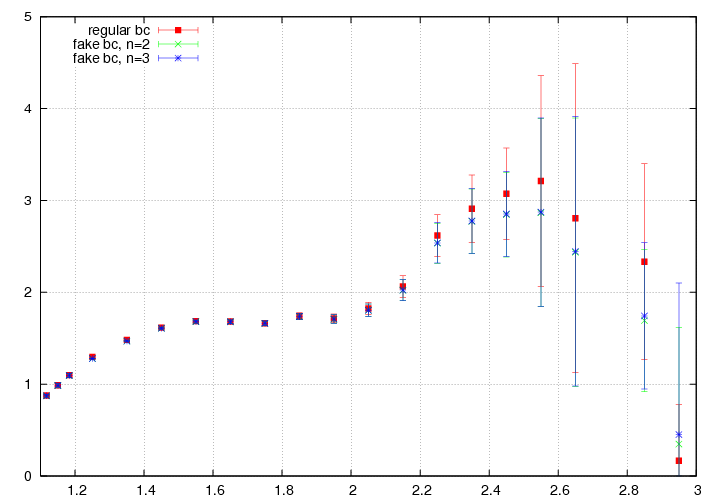
This is also where I learned that I might not be rebinning the cross sections correctly, so I redid the ratio where I rebinned the cross sections by just taking each 3 points and doing an error-weighted average (before, I was also adding an additional weight for the cross-section). This changes the ratio in the following way (these are the lazy errorbars for x>2.5, btw):
